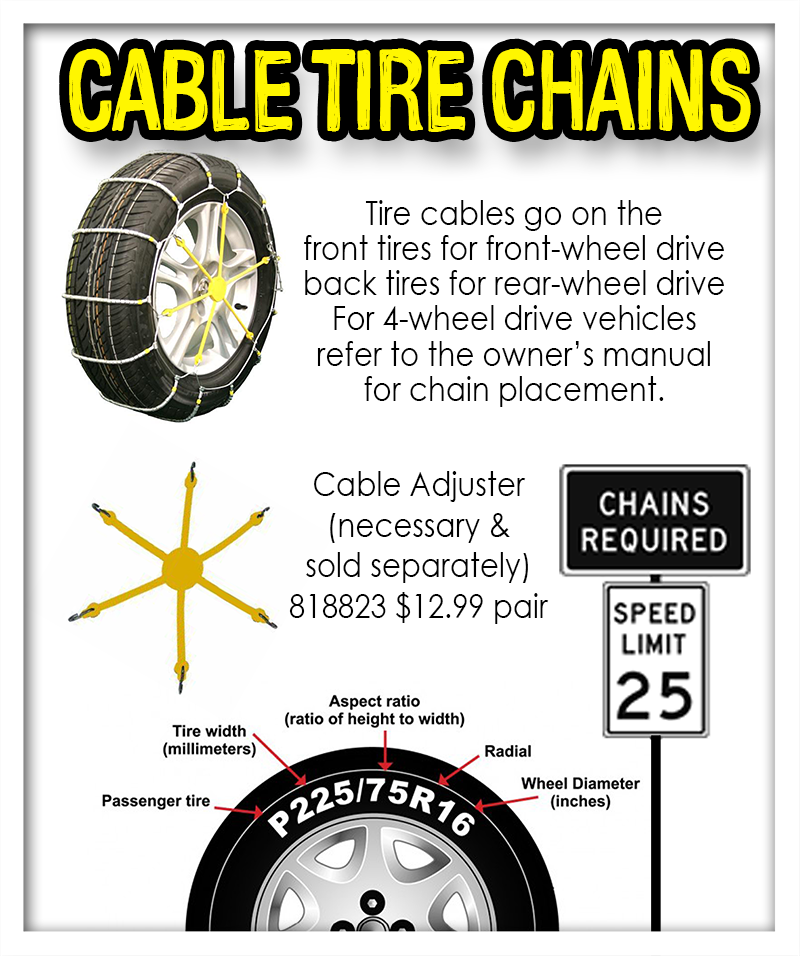If you travel to the mountains or snowy areas regularly, sooner or later you’re going to have to use tire chains. Start by getting the right set for your vehicle at your local Les Schwab.
Quick-fit chains are not your grandpa’s tire chains. They are MUCH simpler to put on and take off. Here are a video, step-by-step instructions, and driving safety tips for installing quick-fit tire chains on your vehicle.
When you need chains, driving conditions are nasty. Snow is coming down, passing traffic is spraying slush, dirty water is dripping off your wheel wells, the road is slick, and it may be dark. Don’t make this the first time you put on your chains.
Practice installing your new chains once BEFORE you travel. Take advantage of a dry garage or driveway to make sure your winter tire chains are the right size and you’re comfortable putting them on. If needed, the professionals at Les Schwab Tire Centers can help.
Put together a simple winter road trip safety kit with warm gloves, waterproof layers, and other items to make your winter driving more safe and comfortable. In the winter, always carry this emergency kit and tire chains in your vehicle.
Once you’re comfortable installing your chains, you’re ready to hit the snow.
Be Safe. If you’re on the road, pull off as far as possible onto a safe shoulder. Flip on your hazard lights. Put on your waterproof layers, hat, headlamp, and gloves from your winter road trip kit.
Identify the Correct Tires. If your vehicle is front-wheel drive, the chains go on the front. If it’s rear-wheel drive, chains go on the back. If it’s all-wheel drive, please check your owner’s manual. If you’re not sure, you can ask the experts at Les Schwab for help.
Pull Out Chains & Instructions. With your vehicle parked, open the bag and pull out your instructions and your first chain. Each bag comes with two chains. The plastic instruction mat that comes with your chains can be used as a barrier between you and the snow to keep you dry.
Untangle Your Chains. Holding them from the plastic-covered cable, make sure everything is straight and the chains are not looped over one another. Hold up your chains so the yellow end is in your left hand and the blue end is in your right.
The chains should hang loosely and the metal hooks seen along the yellow and blue sections should be facing away from you so they don’t damage your tires.
Place Chains onto Your Tire and Connect the Cable. Lay your chains on the ground and push them behind the tire, yellow cable end first, from the right side to the left.
Once the chains are centered behind the wheel, grab both ends and pull them up over the top of the tire. You should feel the chains against your axle.
This will allow you to easily connect the yellow and blue ends of the cable by slipping one end into the other and pulling them into place.
Connect the Red Hook. Now that the cable is connected on top, look for the red hook directly opposite the cable connection. Connect the red hook on the right to the first available gold link on the left.
Check the Diamond Shape. Push the connected chain over the top of the tire. You should see the diamond shape in the chains against your tire. Between each of those diamonds is the center rail, which should be placed down the middle of the tire tread.
Connect the Red Chain Along the Bottom.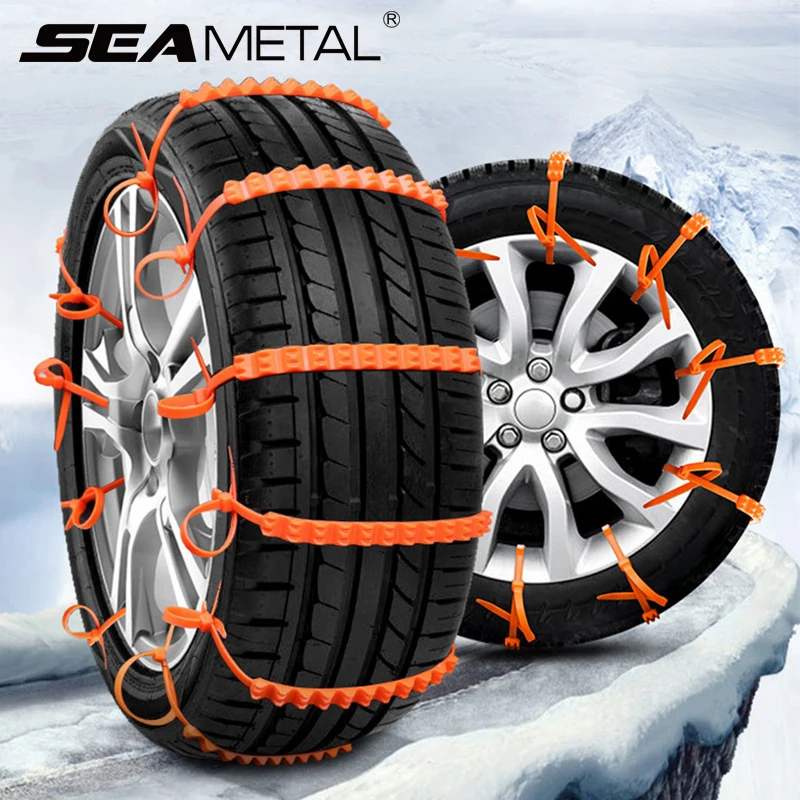 Now that the cable is connected on top, look for the red hook directly opposite the cable connection. Connect the red hook on the right to the first available gold link on the left. Push the connected chain over the top of the tire.
Now that the cable is connected on top, look for the red hook directly opposite the cable connection. Connect the red hook on the right to the first available gold link on the left. Push the connected chain over the top of the tire.
The bottom of the chains includes a red draw chain with bungee on your right, and a chain guide on the left. Pull these out towards yourself.
Take the long red chain and run it through the chain guide and pull as tight as you can with both hands. Don’t pull using the bungee. As you pull, one of the chain links will find its way into the notch on the red chain guide, locking it into place.
Using the bungee end of the red chain, pull it through one or both of the red loops and secure it to a gold-side chain opposite the red loops. If you can’t get it through both loops, that’s ok, pull tight through one and attach it to a side chain to the left of the loop.
Repeat on Second Tire.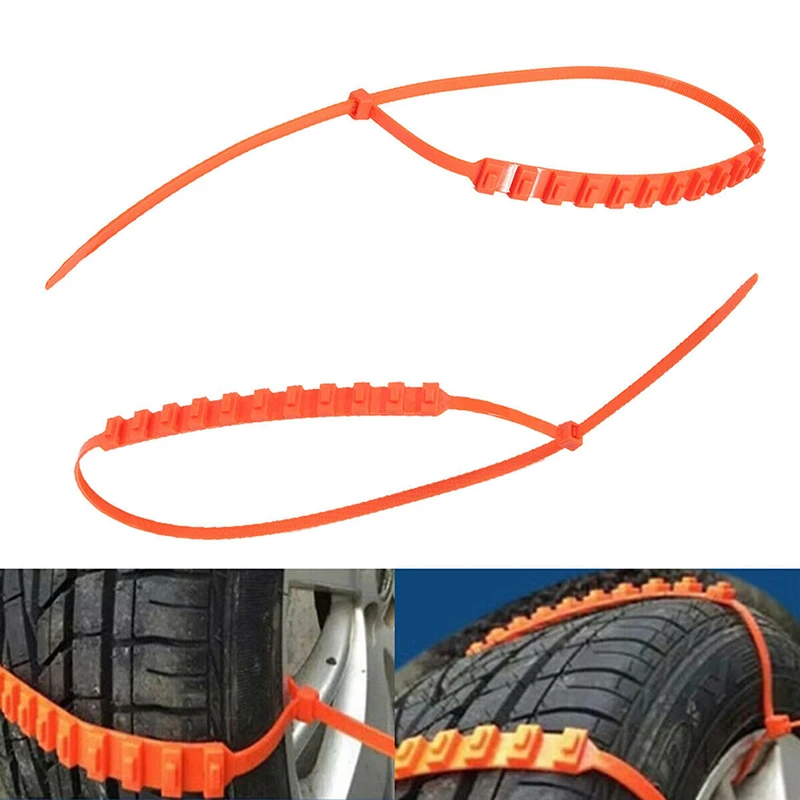 Repeat these steps to install chains on the other side of your vehicle.
Repeat these steps to install chains on the other side of your vehicle.
Drive Forward Slightly. The next step is to drive forward about 15 feet, or a full car length. This gives the chains a chance to relax and settle on your tires.
Re-tighten Chains. To take up any slack, unhook the rubber end of the red draw chain and pull it tight again. Once it’s tight, guide the red chain through the loops and, again, securely latch the bungee end to the gold-side chain.
The chains should be tight on the tire. And, be sure to stop if you hear them making any contact with your vehicle. If your chains are still loose, unhook the bungee and adjust the red hook straight across from the chain guide. Unhook and reattach to the tightest position on one of the three gold chain links. It’s okay if the extra links are hanging loosely. Now, you’re ready to reattach your bungee.
While driving with tire chains, listen for a loud sound of slapping, or metal on metal. If you hear any indication that a chain may be broken or hitting your car, STOP as soon as safely possible. Loose or broken chains that flap can wrap around a strut or shock component, causing big damage to your vehicle. To help prevent damage, here are a few tips for driving when you have winter chains installed on your vehicle.
Pull over in a safe location and remove the chains. Start by unhooking the bungee and chain from the guide, removing them from the tensioner. Unlatch the red hook, and then undo the blue and yellow cable connection. Once all of your chains are off and lying flat on the ground, pull backward or forward slowly a few feet so you can safely pick them up.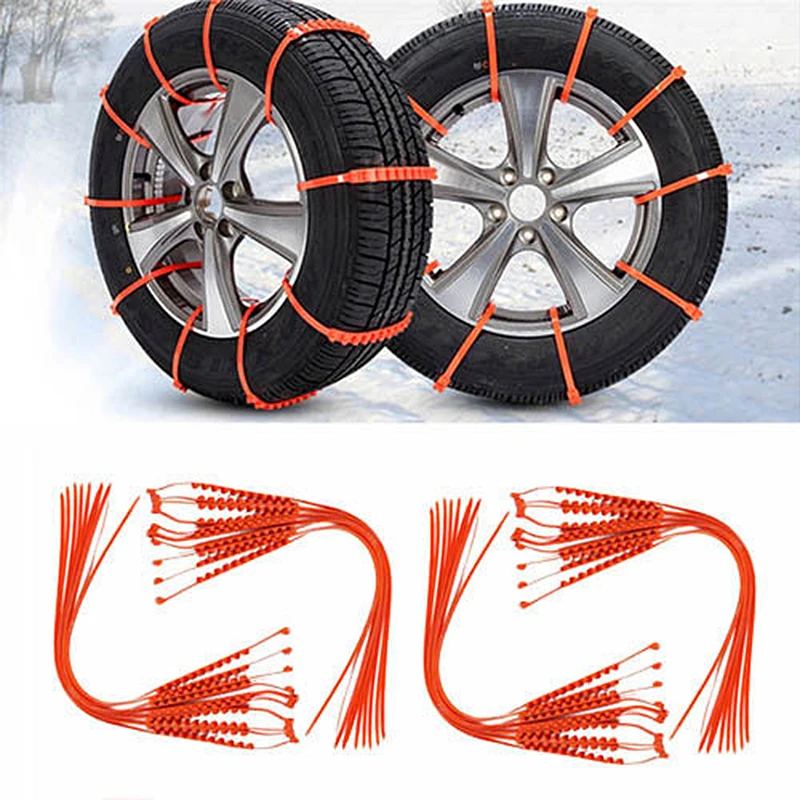
At the end of your trip, lay your chains out in the garage and let them dry. If you pack them wet, they can rust.
Also check them for wear, especially if you’ve driven them on asphalt for any distance. Look for flat spots, and replace the chains if you find some.
Link at left shows flattening from wear. Link in center shows sharp edge from wear that can damage a tire.
Remember, if you don’t use your chains all winter long, you can return them with proof of purchase to any Les Schwab for a full refund in the spring.
Get your next set of Quick-Fit chains, along with a few tips on how to install them, at your local Les Schwab, where doing the right thing matters.
Want more tips on winter road safety? See 19 Winter Driving Resources You Can’t Do Without.
Get More Winter Tips
The Drive and its partners may earn a commission if you purchase a product through one of our links. Read more.
Read more.
If you’re lucky enough to live in an area that gets legitimate winter weather, you’re probably well aware of the annoyance and dangers that a snowstorm can prevent to motorists. Many people opt for winter tires to improve their vehicles’ traction in bad weather, but they’re expensive. Of course, people could stay off the roads altogether in winter weather, but in some places, that’s just not a practical option nor does it solve the issue of getting to and from work, the grocers, or taking your kids to school.
Tire chains, to a degree, help get around those issues with an affordable way to greatly improve traction. They can be installed and uninstalled in minutes, and can truly be the difference between a normal commute and a day spent being pulled out of a ditch.
Even if you do live where the air hurts your face, you might not know much about chains if you’ve relied on winter tires for the majority of your driving life. The Drive’s editors have experience installing chains and have made almost every mistake in the book so you don’t have to.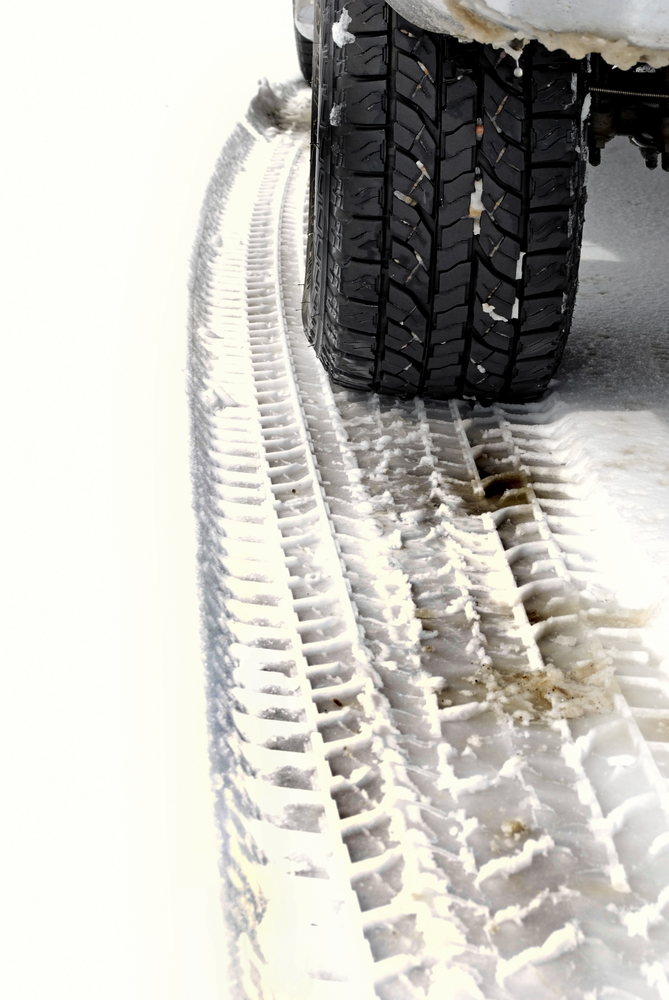 Let’s dive in.
Let’s dive in.
Estimated Time Needed: 10-30 minutes
Skill Level: Beginner
Vehicle System: Exterior/Tires and Wheels
Tire chains are a physical part that’s wrapped around your tires to greatly improve traction in snowy, icy, and slippery conditions. They can be added to standard or winter or all-season tires. They are sold separately from the vehicle and its tires, and can be carried for use when necessary.
When installing tire chains, it’s not really the chains themselves that present the danger. It’s the road conditions and other drivers that you’ll really need to worry about.
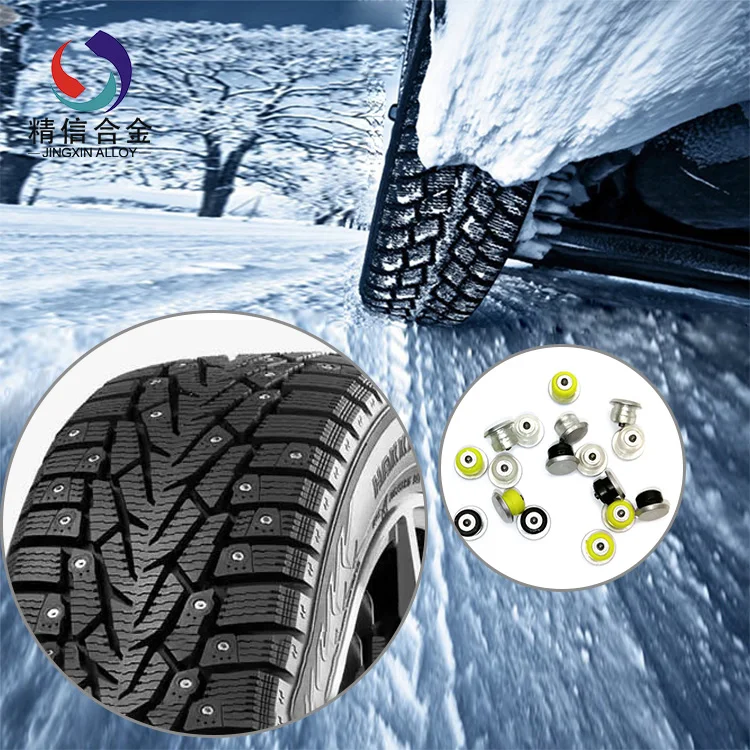
There’s good news! The only thing you’ll truly need to install tire chains is the chains themselves. It’s a good idea to carry a roadside safety kit with emergency markers/reflectors for your own protection, but those things won’t actually help you install the chains.
Organizing your gear so everything is easily reachable will save precious minutes waiting for your handy-dandy child or four-legged helper to bring you the sandpaper or blowtorch, too. (You won't need a blowtorch for this job.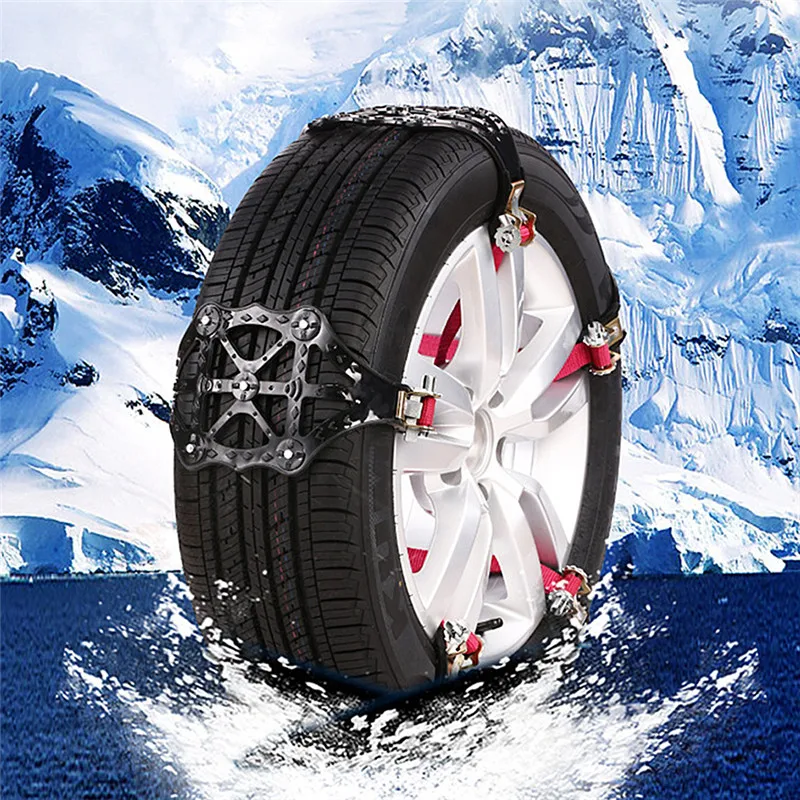 Please don’t have your kid hand you a blowtorch—Ed.)
Please don’t have your kid hand you a blowtorch—Ed.)
You’ll also need a flat workspace, such as a garage floor, driveway, or street parking to install your tire chains. Check your local laws to make sure you’re not violating any codes when using the street because we aren’t getting your ride out of the clink.
Find a safe spot to work., DepositphotosIf you expect that you’ll need tire chains, find a flat space, and try to get out of the way of other drivers.
Let’s do this!

 If they are loose or misaligned, fix the issue to avoid having the chains fly off when the vehicle is in motion.
If they are loose or misaligned, fix the issue to avoid having the chains fly off when the vehicle is in motion.As much as The Drive loves to put the "you" in do-it-yourself, we know that not everyone has the proper tools, a safe workspace, the spare time, or the confidence to tackle major automotive repairs. Sometimes, you just need quality repair work performed by professionals you can trust like our partners, the certified mechanics at Goodyear Tire & Service.
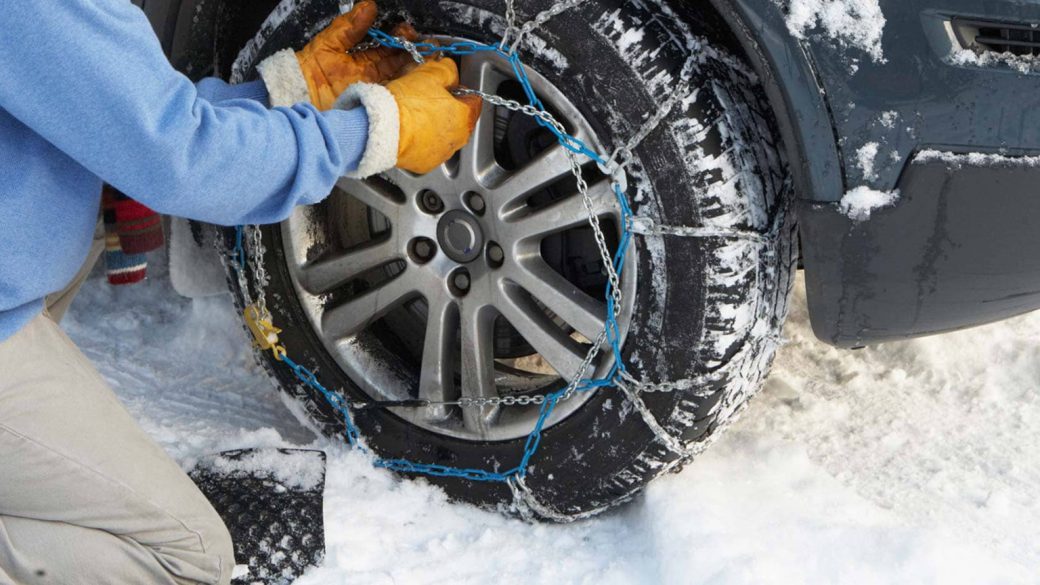 The side of the road is a terrible place to be fumbling with chains.
The side of the road is a terrible place to be fumbling with chains.You’ve got questions, The Drive has answers!
A. Chains do provide better traction on snow and ice than winter tires. They’re also far cheaper than a good set of winter rubber. The issue is having to carry and install them every time there’s bad weather, and then uninstall them on the other side of the storm.
A. In testing performed by Consumer Reports, products like AutoSocks are about as effective as a mid-range winter tire.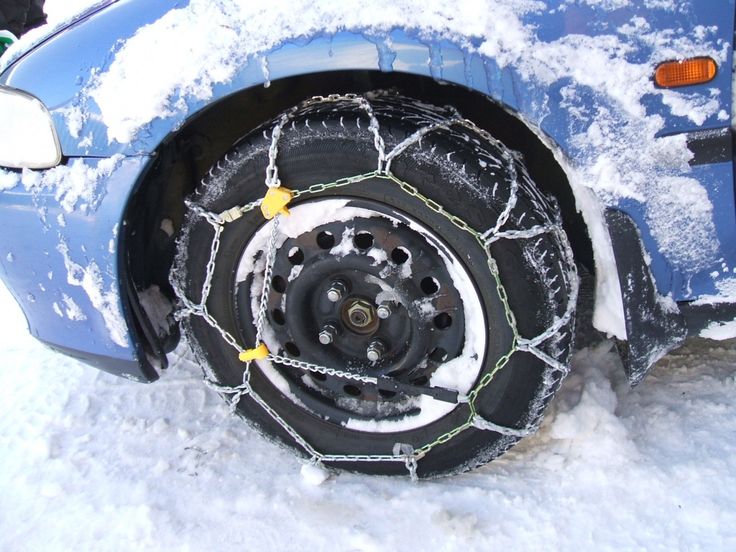 The publication also notes that, for people living in areas with serious winter weather, nothing is better than a solid set of dedicated winter tires.
The publication also notes that, for people living in areas with serious winter weather, nothing is better than a solid set of dedicated winter tires.
A. Remember, you get what you pay for. Winter chains can be had for as little as $40 online, but it’s best to research the most reliable and well-reviewed brands. On average, prices range from around the $40 mark to upwards of $150.
We’re here to be expert guides in everything How-To related. Use us, compliment us, yell at us. Comment below and let’s talk! You can also shout at us on Twitter or Instagram, here are our profiles.
Jonathon Klein: Twitter (@jonathon.klein), Instagram (@jonathon_klein)
Tony Markovich: Twitter (@T_Marko), Instagram (@t_marko)
Chris Teague: Twitter (@TeagueDrives), Instagram (@TeagueDrives)
When it comes to tire chains, The Drive’s editors realize you could spend days just sifting through half of the products available. That’s why we’ve selected a few of our favorites to help get you started on the right track. These products are affordable, useful, and well-reviewed.
New products of the online store are presented by our experienced consultant Sergeyich. Today we are talking about means of increasing cross-country ability on snowy roads.
If you do not get to the sign, then we have lost their road from the road
Humor from the network
of our person not to scare the snow. There is no need to persuade people to change into winter tires today either - the clatter of thorns on the cleared city asphalt is constantly heard. Yes, but it is not everywhere, this same asphalt. For example, I prefer real winter to urban slush - with snowdrifts, country trips, ski resorts, and so on. And therefore I know perfectly well: without preparation, it is both stupid and dangerous to travel on such roads. In some cases, winter tires alone are not enough - and in some places they simply won't let you in! Something else is needed...
Yes, but it is not everywhere, this same asphalt. For example, I prefer real winter to urban slush - with snowdrifts, country trips, ski resorts, and so on. And therefore I know perfectly well: without preparation, it is both stupid and dangerous to travel on such roads. In some cases, winter tires alone are not enough - and in some places they simply won't let you in! Something else is needed...
When the wheels are sunk in snow (or any other soft ground), it is useless to step on the gas. Sit on your belly, burn the clutch - in general, it will become very bad. Previously, in such situations, I put everything that came to hand under the wheels - boards, branches and everything else. But today a more civilized solution is known - the so-called trucks. Sometimes they are called sand trucks, but the essence of this does not change. We are talking about profiled plates made of aluminum, steel or plastic - there are a lot of options. On my own behalf, I’ll add that heavier metal tracks can be straightened during deformation - unlike light and bright plastic ones, which “make a mistake only once”.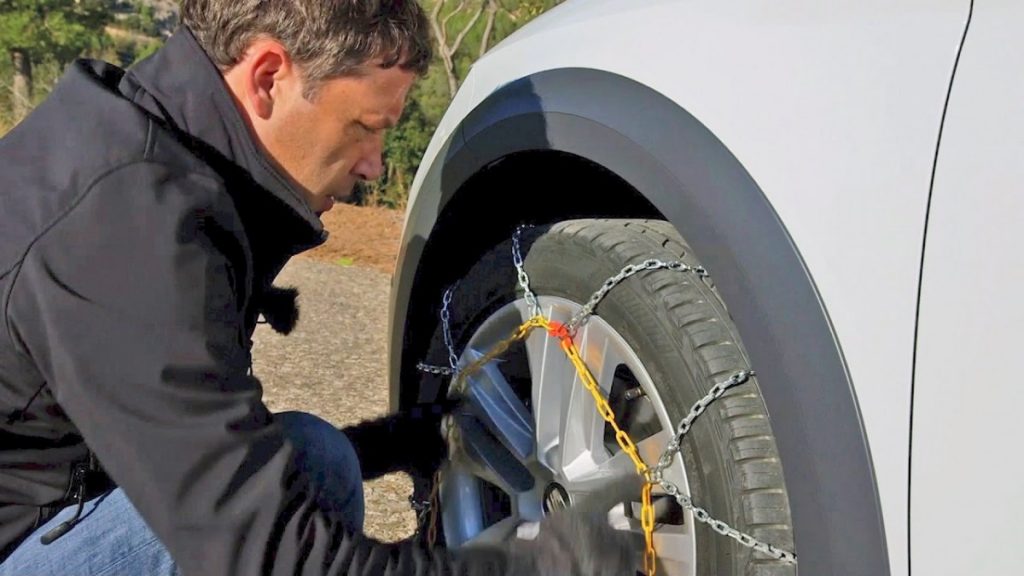
Using the tracks is not very difficult: just push the product under the buried drive wheel in the direction of the machine. By the way, in some cases I had to use the truck as a stand for a jack. Those who have had to change a wheel on a snowy road will understand me right away. By the way, I completely forgot - such products are not tied to the brand of the car ...
The chain is just such a "bells and whistles", without which you will simply not be allowed on some European roads. Of course, you can buy them somewhere closer to the Alps, but I prefer to prepare for long trips in advance. Yes, and my budget is not rubber.
Car snow chains are a kind of car seat cover. They usually consist of two longitudinal chains or cables running around the circumference of the wheel, which are connected by transverse chains that increase the car's flotation on snow, ice, etc. The service life of chains is a priori higher than, say, belts or bracelets. Let me remind you right away that chains are not universal - they must be selected specifically for your car.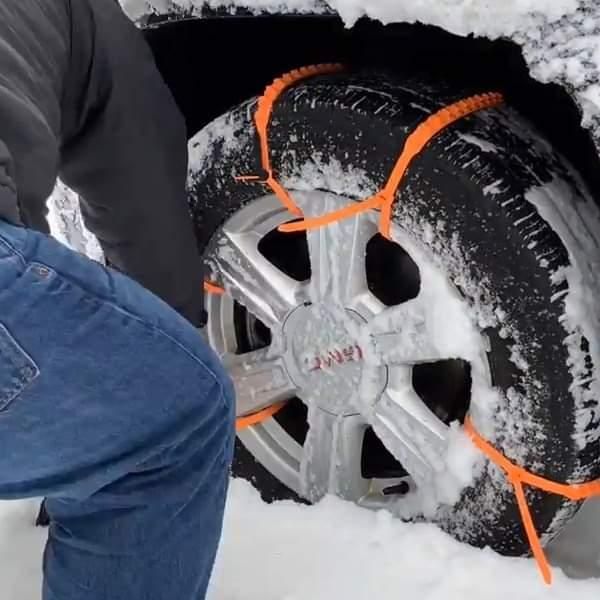 And if you change the car, then it is quite possible that you will have to say goodbye to the chains. By the way, if you have very low-profile tires, then you may not find chains for it. But who will go to the Alps on low-profile tires?
And if you change the car, then it is quite possible that you will have to say goodbye to the chains. By the way, if you have very low-profile tires, then you may not find chains for it. But who will go to the Alps on low-profile tires?
I would not call the installation difficult - you just need to carry it out before entering the problematic section of the road. It takes me ten minutes on the strength. "Snow" chains are mounted in one step, and the final "landing" occurs automatically when the car is moving. There are also so-called mud chains, but today we are interested in snow expanses. Although the meaning is obvious: we are going to the dacha on asphalt - we don’t need to wear anything, we moved out to a muddy area with ups and downs - we can put it on. By the way, all the chains help to keep the car in oncoming sidings with a slope of the road. Off-road driving requires a certain culture, believe me! I will add that mud chains do not have a self-tensioning mechanism, they have nothing to clog.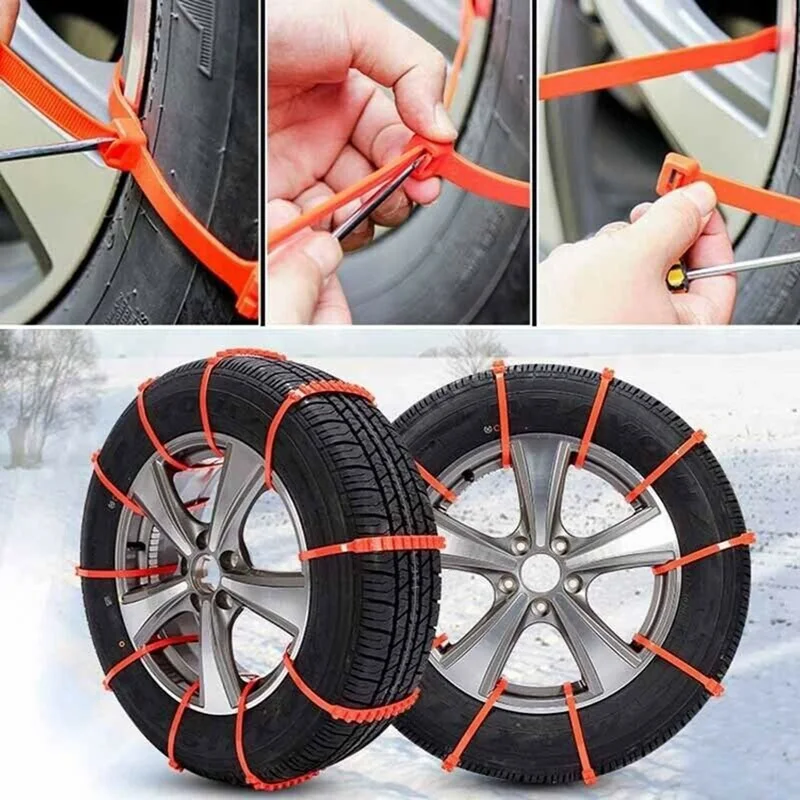 Moreover, they are cheaper than "snow". From personal experience, I will say that after installing mud chains, it is advisable to get out of the car literally after a dozen meters and hold on to the chain.
Moreover, they are cheaper than "snow". From personal experience, I will say that after installing mud chains, it is advisable to get out of the car literally after a dozen meters and hold on to the chain.
By the way, there are still distant relatives of chains - the so-called composite chains. Sometimes they are called nets because of the characteristic tread pattern. I recommend them only for short snowy sections of the road: after all, this is not so hot what a reliable little thing. However, as my colleagues note, if a car has expensive alloy wheels, then it is much easier to damage them with chains than with nets. I won't argue with that.
It is better to put them on all four wheels - remember this. And it doesn't matter if you have an all-wheel drive car or not. The meaning is clear: the car must brake well! Chains are selected precisely according to the standard size. However, my acquaintances assure me that neither the manufacturer nor the police insist on purchasing two sets of chains for all wheels: one set per axle is enough.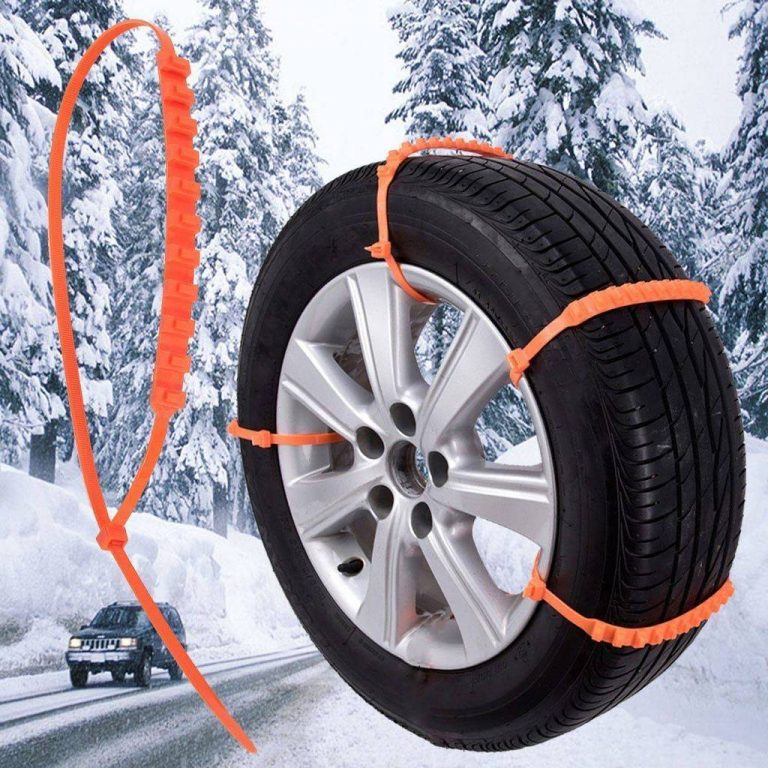 But I am convinced that when installed on all wheels, efficiency will only increase!
But I am convinced that when installed on all wheels, efficiency will only increase!
Bracelets for wheels - this kind of chain, sawn into pieces - from afar you can and confuse! 5-6 pieces are put on each wheel, although sometimes only one is enough to get out of a snow trap. I know from my own experience that bracelets can be mounted both in advance and already "after" - although the latter, of course, is heavier. By the way, you can’t spoil the porridge with oil: the more bracelets on the wheel, the better. But they wear out more than a classic chain.
When purchasing bracelets, be sure to consult the seller: some wheels cannot be put on. This happens if, for example, the slots in them are too narrow, and also if the wheel itself is so small that the bracelet starts to catch on the caliper.
Don't expect a particularly smooth ride with bracelets. But on the snow they row confidently - I personally checked it on different machines. I note that bracelets have good versatility: the exact size when buying is not needed. One set is suitable for all passenger cars, the second for all crossovers, and the third for SUVs. The difference is in the length of the belt and the number of links. But in general, bracelets can be called the most democratic helpers of a novice "rogue": to be honest, special knowledge is not needed when choosing them.
I note that bracelets have good versatility: the exact size when buying is not needed. One set is suitable for all passenger cars, the second for all crossovers, and the third for SUVs. The difference is in the length of the belt and the number of links. But in general, bracelets can be called the most democratic helpers of a novice "rogue": to be honest, special knowledge is not needed when choosing them.
Belts for wheels are, like bracelets, also the younger brothers of chains. They are usually made from some kind of synthetic material - most often from polyurethane. However, I have also seen plastic products with metal lugs - there are quite a few options. Some manufacturers use the term "overlay" - in my opinion, this is almost the same plastic accessory with a different appearance. But in any case, they are distinguished from chains and bracelets by their lower strength. In general, I would classify them as pretty trunk dwellers rather than tough off-road fighters.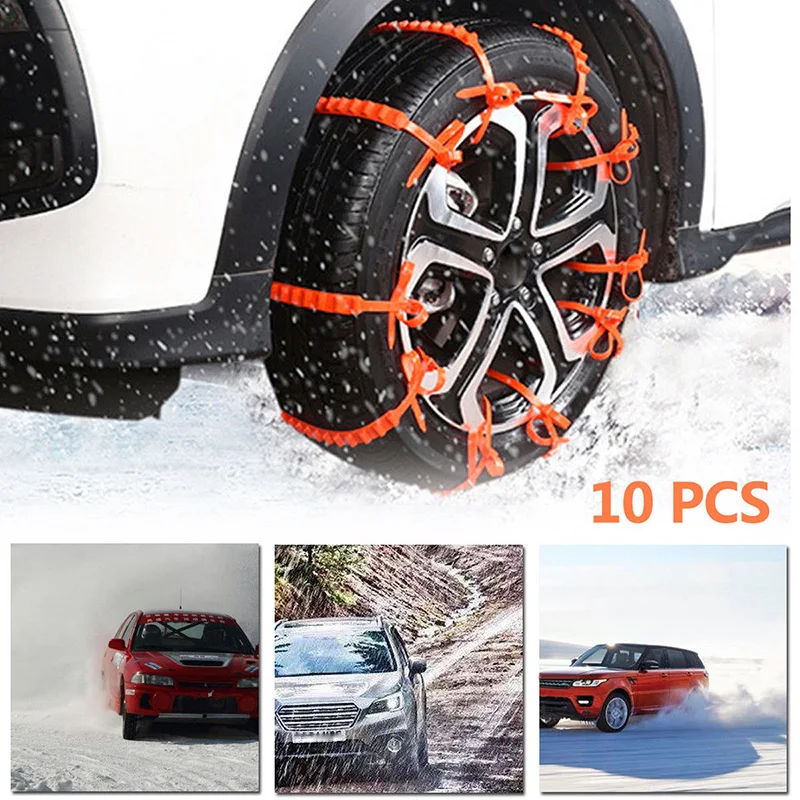 Although for a gift under the Christmas tree it is an ideal thing: cute and at the same time by no means useless. You just need to remember that you can install them, like bracelets, not on every wheel. I constantly remind all my friends: if there are narrow slots on the wheel or if the wheel size is such that any belt starts to cling to the caliper, then the purchase will have to be abandoned.
Although for a gift under the Christmas tree it is an ideal thing: cute and at the same time by no means useless. You just need to remember that you can install them, like bracelets, not on every wheel. I constantly remind all my friends: if there are narrow slots on the wheel or if the wheel size is such that any belt starts to cling to the caliper, then the purchase will have to be abandoned.
Here, in a nutshell, is all I wanted to say about the main modern ways to increase the car's cross-country ability. If you need additional advice or assistance in the selection, please contact our online store! And if at the same time you refer to this article, you will receive an additional five percent discount!
Good luck on snowy roads!
Chains, bracelets and wheel belts: freedom on the winter road

Chains, bracelets and wheel belts: freedom on the winter road
Change of seasons, cooling or warming are associated with the replacement of car tires. Car owners are faced with the choice of tire type, wondering at what temperature Velcro can be driven and how to provide optimal conditions for accident-free driving.
Summer tires are designed for positive temperatures. Winter tires are used at 7°C and below. The main differences are in the quality of the rubber, as well as in the tread pattern.
"Winter" rubber compound provides a short braking distance, good grip on snow and ice surfaces. The tread is characterized by a high density of sipes, a directional pattern, and expanded grooves. When choosing, you should consider the difference between traditional studded models and Velcro.
When choosing, you should consider the difference between traditional studded models and Velcro.
Non-studded "sticky" wheels are made of soft rubber, have an extensive network of grooves on the tread. Water from the road surface is distributed over the lamellas and "absorbed". The friction between the wheel and the surface increases, the car "sticks" to the road.
According to the results of testing of both variants, which was carried out in difficult conditions, the average stopping distance of a car with Velcro is 15-17% less than studded cars.
The braking distance depends on temperature, road conditions, ice conditions. The car travels the same distance from pressing the brake pedal to a complete stop on the spikes or Velcro at -15°C. When the temperature drops, it is advisable to wear “soft” tires, and when the temperature rises, studded tires.
Velcro is suitable for rough ice, because the lamellas cling to uneven surfaces. On a smooth ice field, a car with spikes will be more stable.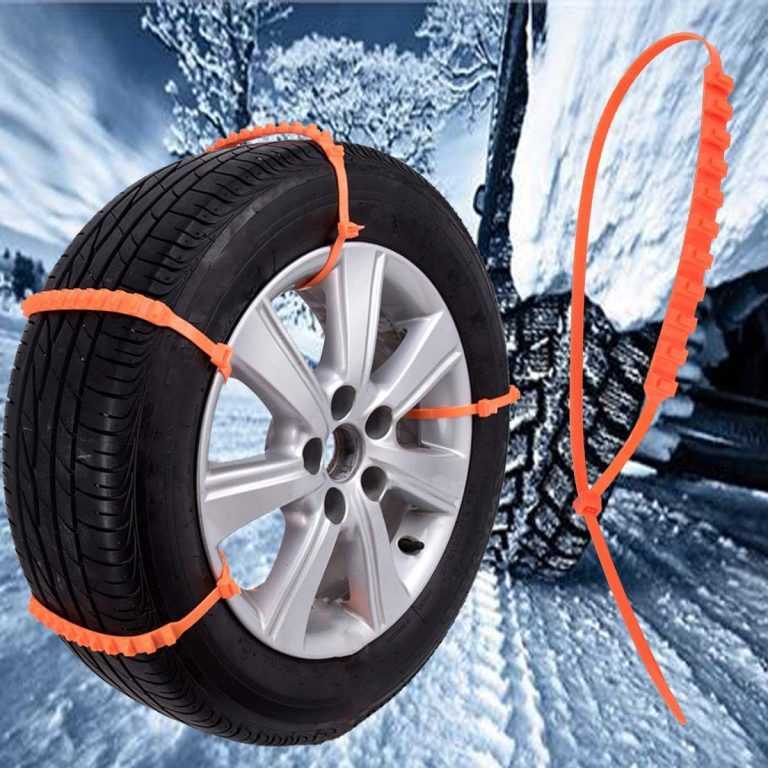 If the sun has melted the surface, studded tires will also be more effective.
If the sun has melted the surface, studded tires will also be more effective.
When the temperature drops to -20°C, the stopping distance of the car on spikes is 20% longer than Velcro. Therefore, during severe cold weather, it is better to use “soft” rubber.
In the range from -5°C to 0°C, the braking distance of the car on the spikes will be shorter. Melt water causes Velcro to slip. The more water, the worse the grip of the wheels. In puddles, the effectiveness of any rubber is reduced. But studded tires are better for slippery surfaces.
When choosing tires, first of all, you should take into account the climatic zone of the region where you live. On frozen roads, during harsh winters, it is better to use Velcro. Spikes are more suitable for mild climates, thaws and ice.
The standard condition for changing tires is a decrease in the average daily temperature below 3°C. Consider the difference between the city and the suburbs. City streets can be dry, while rural roads are icy.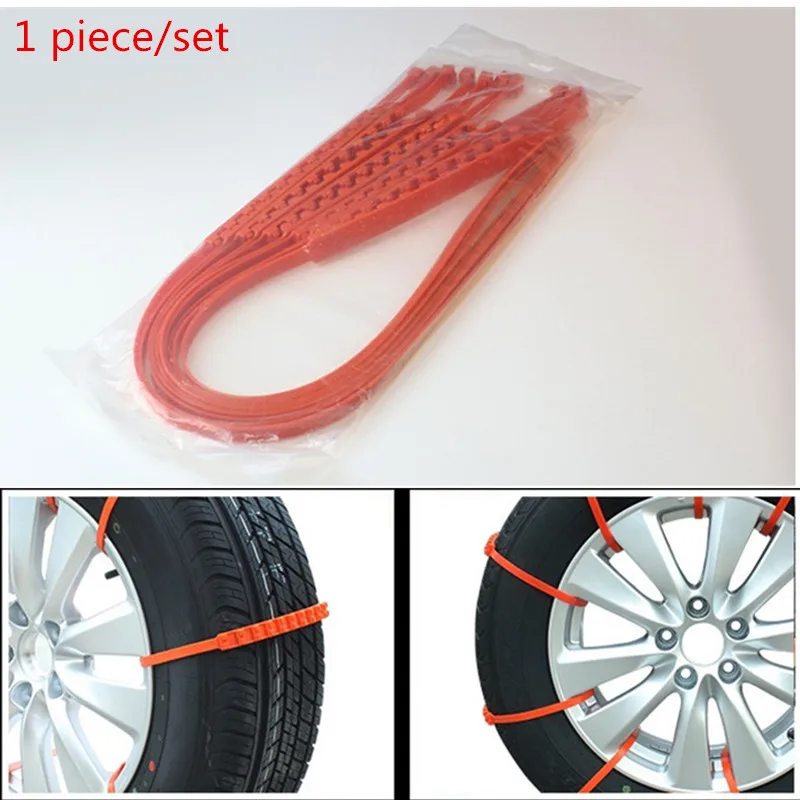 Therefore, a change is necessary if the daytime temperature does not exceed 3°C.
Therefore, a change is necessary if the daytime temperature does not exceed 3°C.
Soft winter tires lose their effectiveness at 10°C and above. The braking distance increases, the probability of accidents increases, the comfort of travel decreases. The optimal period for replacement is from mid-October to November 15-20. The first “call” is snowfall or frost.
As a general rule, the machine must be prepared before snow or ice forms on the road. If a sudden change in temperature is expected, and the car is used intensively, put the Velcro on at 9°C. In such cases, it is necessary to avoid abrupt maneuvers, choose a gentle speed mode, and keep an increased distance.
If the car is used irregularly, the optimum temperature for replacement is 0°C. In order not to get into an accident, you can use public transport and wait for favorable weather conditions.
Tires must be marked "M+S", "M&S" or "M S", a specific tread pattern. The requirements apply to cars of category B and trucks.